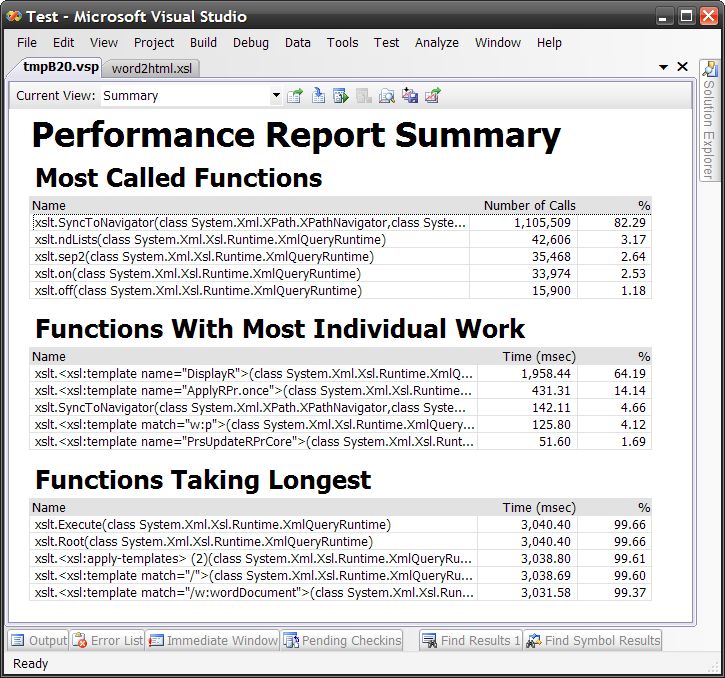Microsoft XML Tools team has released XSLT profiler addin for Visual Studio 2008. I've heard about this tool and even did a little testing long time ago (apparently it's very hard to release anything in Microsoft).
First thing you need to know about Microsoft XSLT profiler - it requires Visual Studio 2008 Team System edition with the Performance Tools feature installed. That actually sounds a bit steep for just XSLT profiler, but it starts to make sense once you realize this tool is just a thin wrapper around the F1 profiler (which only ships with Visual Studio Team System SKU).
Once installed, it adds "Profile XSLT" command (visible only in XSLT context, i.e. when active document is XSLT stylesheet) to the XML menu:

Before you see profiling results you should recall that XSLT in .NET starting with 2.0 is compiled to MSIL:

As you can see, an XSLT stylesheet is being compiled into a class and each template becomes a method with cool special name like <xsl:template match="book">. That was smart. And yes, MSIL is completely ok with such kind of method names. Beside template-mehods the generated class contains other auxiliary stuff. So don't be surprised with XSLT profiling results:

I'd say there is too much clutter in this form. I'd like to see only XSLT relevant info, but as you can understand now, it's the the results of profiling compiled assembly and XSLT part is here only because smart compilation tricks.
Still extremely useful tool. A must for anybody writing XSLT in Visual Studio. Besides Summary View there are: Call Tree View, Modules View, Caller/Callee, Functions, Marks and Processes Views. You can find more info about profiling report details at http://code.msdn.microsoft.com/xsltprofiler.
I'd be happy to see next version. With all clutter removed, more XSLT focused, linked to XSLT source (seems like currently there is no way to get back to template source from report), may be with some smart visualizations (what about coloring XSLT source view to indicate the hot spots?). Oh well, provided it took XML Tools team so long to ship this tool I better try to implement all these ideas myself in Iron XSLT (stay tuned, it's not dead as I'm back).



Recent Comments